1. Canon
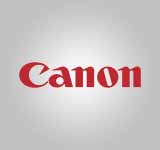
The company was founded in 1937 by Takeshi Mitarai, Goro Yoshida, Saburo Uchida and Takeo Maeda, under the name of Precision Optical Instruments Laboratory. The original purpose of this was research to improve and develop the quality of cameras. In June of 1934 it was created the first camera Canon, the Kwanon, named in honor of Kuan Yin, the goddess Buddhist mercy. In 1935 the company changed its name to Canon in order to reflect a more modern image. In 1987 they launched their line of cameras EOS, acronym in English of "electro-optical system", and also listed in honor of the Greek goddess EOS or the dawn. This system meant a total detachment of the manual focus and gave rise to the ultrasonic approach and optical stabilization, both introduced by Canon in the world of reflex photography and which became a standard in professional and high-speed photography. Canon has been chosen in 2010 as the most trusted camera brand in Europe for the tenth consecutive year, according to Readers Digest.
2. Nikon
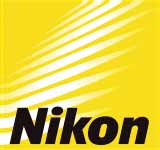
The company was created in 1917. The company specialized in the construction of precision lenses and instruments for cameras, binoculars, microscopes and measuring instruments. During World War II Nikon became a provider of binoculars, periscopes and other optical instruments for the Japanese army, and grew to have 19 industrial establishments and 23,000 employees. In 1946 Nikon, from the Nippon Kōgaku union ("Japanese optician"), took the name Ikon, a reference to the Zeiss. Among the most famous Nikon products may be mentioned objectives Nikkor, cameras SLR F-Series, underwater cameras Nikonos and, recently, the D series digital SLR or DSLR. The D series (especially models such as Nikon D300, Nikon D90 and Nikon D40), together with the Coolpix series, have contributed significantly to the popularity of digital photography among beginners and semi-professionals. Nikon and Canon cameras are very popular in beginner, semi-professional and professional photographers.
3. Olympus
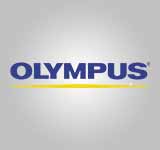
Olympus has a great tradition in the design and manufacture of cameras and lenses. The first truly innovative Olympus camera was the PEN system, launched in 1959. With an 18x24mm format, it was one of the most compact and portable cameras of its time. The PEN system design group was led by Yoshihisa Maitani. With the same spirit, the same team created the revolutionary OM system, a professional system based on 35mm "full frame" designed to compete with the best-selling Nikon and Canon. The OM system brought with it a new trend of more compact cameras with new features such as TTL (through the lens) technology or automatic flash. The OM system came to have 14 different camera bodies and about 60 lenses, the celebrated Zuiko lenses, which became famous for their small size and for breaking some opening record for certain focal distances. In 2006, the Olympus E-400 was launched, the smallest and lightest SLR camera on the market at that time. During 2007 Olympus expanded the range of bodies available with the Olympus E-410, the Olympus E-510 and the Olympus E-3. In May 2008 Olympus released a new SLR, the Olympus E-520, in January 2009 Olympus launched a new camera, the E-620.
4. Sony
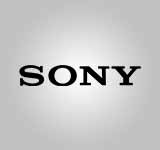
Sony Corporation (Sonī Kabushiki Gaisha), commonly referred to as Sony, is a Japanese multinational company based in Tokyo (Japan) and one of the world's leading manufacturers in consumer electronics: audio and video, computing, photography, video games, mobile telephony, professional products, etc. In 1980, Sony launched the first integrated camcorder, camera and recorder, destined for the domestic market. Sony produces its own line of digital cameras since 1996 under the Cyber-shot brand. Its first model was the DSC-F1, a compact 0.31 megapixel. In 2006 Sony expanded its product range with the launch of its first DSLR digital camera, the Alfa 100 DSLR, and the first Sony Ericsson mobile with the Cyber-Shot badge, the K series. For the development of its new Sony α line, Sony acquired the camera manufacturing division of Konica Minolta.
5. Panasonic Lumix
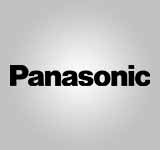
Lumix is the brand name for the digital cameras of Panasonic Corporation. The product spectrum ranges from simple and sophisticated compact cameras on bridge cameras to system and SLR. Since 2001, many Lumix cameras with lenses from Leica equipped. These lenses are developed under a cooperation agreement between Panasonic and Leica in Germany and made in Japan. Some Lumix cameras are also available in an almost identical form from Leica. Panasonic was the first corporation to introduce a "Mirrorless" camera (DMC-G1) to the digital photography market in 2008. This revolution began after being part of the 4/3 consortium that it shares until now with Olympus (now m4/3). This concept is causing a great change in the manufacture of cameras in the world, since it dispenses with the mirror and has advantages of exposure in real time and full time auto-focus. Panasonic has had a strong influence on the "budget" segment with its "GH" camera line, in addition to having a large number of high-quality professional film equipment. On 25 September 2018, Panasonic became one of the founding members of the L-Mount Alliance, and announced two full-frame mirror-less cameras and a range of L-Mount lenses to be launched in 2019. The 47-megapixel Panasonic Lumix S1R and the 24-megapixel Panasonic Lumix S1 are the first full-frame mirror-less cameras manufactured by Panasonic and provide Lumix Pro support service for professional photographers.
6. Phase One

Phase One is a Danish company specializing in equipment and software for high-end digital photography. Manufactures medium format camera systems and solutions. Its own RAW processing software, Capture One, supports many DSLRs. In 2006, Phase One began a close collaboration with the Mamiya firm, which bore fruit in its first common production two years later, in 2008. In 2009, they sold two camera models: The Phase One 645AF and The Phase One 645DF. The Phase One 645DF camera body supports a large number of accessories, such as the IQ and P+backs, as well as some of the Hasselblad and Leaf brands, among others. Its shutter speeds range from 1/4000s to 1 hour and allows synchronization speeds greater than 1/1600 sec. In addition to the objectives of the camera can use Schneider Kreuznach and the Hasselblad V and Pentagon 6 (via an adapter). The V-Grip Air vertical backrest accepts Profoto flashes for wireless synchronization.
7. FujiFilm
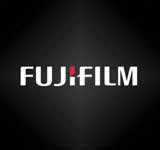
Fujifilm Holdings Corporation, better known as Fujifilm or simply Fuji, is a Japanese multinational corporation founded in 1934 specializing in cameras and photographic images, in addition to various products and services related to photography and image. Based in Tokyo, it is currently one of the leaders in the photography and optics sector. Fujifilm's main activities are the development, production, sale and service of color photographic film, digital cameras, photo finishing equipment, color paper, chemicals for photofinal, medical imaging equipment, equipment and materials for graphic arts, flat screens, optical devices, photocopiers and printers. The beginning of the new millennium witnessed the rapid spread of the application of digital technology in cameras. The demand for photographic films showed a sudden drop to the detriment of the growing popularity of digital cameras. In response, Fuji Photo advanced reforms in its business direction aimed at performing drastic transformations in its business structure.
8. Mamiya

The Mamiya is a Japanese camera company based in Bunkyō, Tokyo. It was founded by Seichi Mamiya in 1940 and focuses in its product range on medium format cameras for professional photographers and ambitious amateurs. The parent company, which produces golf clubs and various electronic components in addition to the photo products, sold the photos division to the company Cosmo Digital Imaging in 2006. This will continue to operate under the name Mamiya Digital Imaging. The Mamiya 645 model is one of the most used medium format cameras in commercial photography. The 6×7 models (RB, RZ) have advanced to become the most popular medium format cameras worldwide among people and fashion photographers due to their "ideal" page format and the generous image display on the large screen. Different manufacturers also offer a range of digital backs for both product lines.
9. Contax

Contax is a camera brand from Carl Zeiss. From 1932 to 2005, cameras of various manufacturers and types were offered under this name, for which Carl Zeiss (and until 1958 also the VEB Carl Zeiss Jena) supplied the lenses. The construction of a Contax SLR camera had already begun in 1938. At the Zeiss Ikon location in Dresden, expropriated in 1948, the VEB Zeiss Ikon, the Contax S was launched in 1949 with a lens mount in the form of an M42 lens thread. It was the first single-lens reflex camera with a viewfinder prism to provide a correct viewfinder image. After relocating the Zeiss Ikon AG headquarters to the Stuttgart location, production of range finder cameras was established there. In 1950 the completely redesigned Contax IIa appeared, in 1951 the Contax IIIa. These were significantly reduced compared to the pre-war models, and flash synchronization was also available. The cameras were discontinued in 1962 because Zeiss Ikon focused on single-lens reflex cameras. These were given the names Contaflex, Contarex, Icarex and SL 706 and were built until 1972. No Contax cameras are currently in production, and the brand is considered dormant.
10. Leica
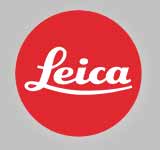
Leica Camera is a German company dedicated to the manufacture of precision optical instruments. It is divided into three clearly differentiated companies: Leica Camera AG, Leica Geosystems AG and Leica Microsystems AG, which are dedicated respectively to producing cameras, topographic equipment (for topography) and medical equipment (microscopy, histological process). Before World War II, the Leica and Contax cameras of Zeiss Ikon (the competition) were considered the best 35mm cameras, but after World War II the companies had the competence of the Soviet and Japanese copies. During the 1950s, Japanese quality and innovation, along with low prices, devastated the European camera industry. Leica became a type of expensive camera bought mostly by professional or serious photographers. However, the appearance of SLR camera technology left Leica as the main product of a declining market segment. Leica has maintained a remarkable commercial name in the 21st century. The current model is the Leica R9, which has an optional Leica DMR Digital Module, which makes it the only hybrid 35mm camera on the market.
11. Pentax

Pentax Corporation is a Japanese optical company specializing in the manufacture of photographic equipment (cameras and optics), telescopes, sports optics and medical equipment. In 1952 the company launched its first camera, the Asahiflex, becoming the first SLR camera in Japan, patenting the pentaprism that all SLR cameras in the world use today. Precisely from this patent of pentaprism derives the name of PENTAX. Since 1957, the company would be known worldwide as Asahi Pentax. In 2002 it adopted what is its current name: Pentax Corporation. At present, Pentax is one of the leaders in the sector, marketing binoculars, cameras, lenses, and other accessories and optical equipment. In 2004, it had 6,000 employees worldwide. Japanese lens manufacturer Hoya Corporation notified on July 1, 2011, the sale of its Pentax camera business to the manufacturer of printers and copiers Ricoh, in an agreement, according to the Nikkei business daily, of around ¥10 billion (US $124,200,000).
12. Sigma
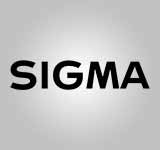
Sigma Corporation is a Japanese manufacturer of cameras, lenses, flashes and other photographic accessories and was founded on September 9, 1961. The company is known for creating lenses and other accessories compatible with cameras from other manufacturers, in addition to having its own line of cameras. Sigma was founded by Michihiro Yamaki who was Executive Director until his death at the age of 78 in 2012. Sigma is one of the largest independent lens and camera manufacturers in the world and is a family business. Sigma manufactures lenses compatible with Canon, Nikon, Pentax, Sony (A and E frames), Olympus and Micro 4/3, as well as its own SA mount cameras. The cameras manufactured by Sigma differ from their competitors by using the Foveon X3 sensor that works very differently from the standard Bayer Sensor found in most cameras today. Currently, Sigma manufactures high-quality optical objectives which it groups in the "Sigma Global Vision (SGV)" line that includes the Contemporary, Art and Sports lines. It also manufactures lenses for film cameras (Lenses Cinema).
13. Zenit

Zenit is a Soviet, and now Russian, brand of cameras and photographic lenses. The bodies of these cameras have been produced by the KMZ factories (Krasnogorskiy Mekhanicheskiy Zavod, Krasnogorsk Mechanical Factory) from 1952 until 2005 in Moscow and BelOMO (Belorusskoe Optiko-Mechanichesckoye Obyedinenie, Optical-mechanical Association of Belarus) since the 1970s in Belarus and the normal Helios-44 targets that mostly accompany them were also produced in Moscow, Valdaiand Vileyka. The Zenit brand is mainly identified with 35mm SLR cameras, although other types of non-SLR cameras have been designated by this name. Zenit photographic objectives are currently produced at the KMZ plant and on several occasions the resumption of camera production has been announced, even when the project has not been finalized. Zenit SLR cameras were originally equipped with a normal 50mm Industar lens and f3.5 or 2.8 diaphragm. Several normal Helios and Zenitar lenses were manufactured, but particularly inseparable from the Zenit cameras, the Helios-44, in their different versions, were 58 mm and f2 diaphragm.
